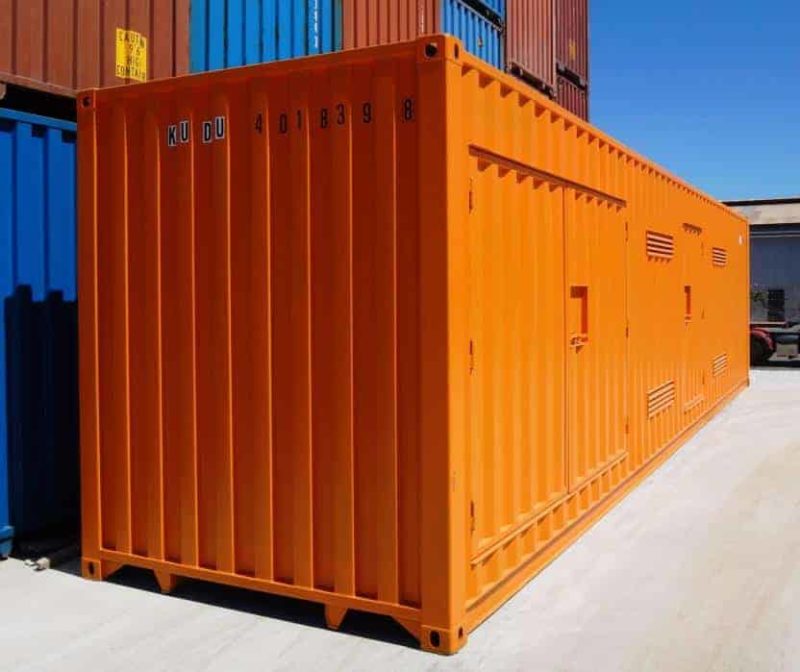Shipping containers look big and tough but just how heavy are they? Let’s look at how much some of the common shipping container weigh and the advantages of standardising shipping container weights for transporting goods.
Shipping container weights
There are four common types of shipping container weights. As you can see in the table below a 20ft standard shipping container weighs a lot less than a 40ft high cube container. They also have different payload capacity.
| Container | Tare Weight | Payload Weight | Gross Weight |
| 20ft Standard | 2050kg | 28,430kg | 30,480kg |
| 20ft High Cube | 2230kg | 28,250kg | 30,480kg |
| 40ft Standard | 3750kg | 26,730kg | 30,480kg |
| 40ft High Cube | 3890kg | 26,590kg | 30,480kg |
Shipping container weight limit
The gross shipping container weight limit of 30,480kg is standardised for practical reasons – a container truck will have axle weight limits, for example, and too many heavy containers on a ship could end up causing its structure to fail and its life being shortened or even sinking. Fewer container ships sink due to metal fatigue than bulk cargo ships but that’s largely due to tolerances being limited in the weight of the containers – there are no such guarantees in bulk carriers.
In terms of transporting goods the weight limit means you can pack bulky, lighter goods into a bigger container yet smaller, denser goods into the smaller one – ultimately they can carry no more weight the bigger they are.
Stacking weights
One of the advantages of standardising shipping containers in weight is that they can be stacked up to eight high, making for denser cargo storage both ashore in transit and at sea. If stacked and locked corner to corner, each container can take up to 240 tonnes on top of it!
This is because the corners of the containers are structural – the roofs and floors aren’t so much.
Durable flooring
Container floors are able to take a lot more than 26.59 tonnes of cargo on them thanks to the safety tolerances involved. Traditionally they are made of hardwood plywood that can take more than 6,000 cargo movements during its lifespan. Increasingly container manufacturers are moving to sustainable, fast growing bamboo that is just as tough but kinder to the planet.
Watch the roof
Containers are designed to be stacked corner to corner. The roofs are designed to keep out the weather, pests and thieves but that’s about it. They can take about 200kg on top (a big man with his tools can work on it for maintenance) but where it comes to stacking they can’t for example be stacked cross-wise.
Knowing this, architects reinforce the roofs when using novel ways of stacking repurposed containers to meet their vision.
Built for a kicking
Shipping containers are built to take a kicking from all weathers. Just look at this video!
This is because they are made of hardwearing CorTen steel that protects itself with a layer of rust, even if the protective paint has been chipped off.
This is why repurposed shipping containers have long lives!
Though a shipping container can do five years of globetrotting in sea-service they can live a long time after retirement thanks to being built like tanks. Well maintained, they can ‘live’ for 30 years and more. This is at least the lifespan that some modern residential homes are built for! You just need to watch any rust patches and keep the seals in good nick and it will serve you well for many years to come.
Want a repurposed shipping container?
Get in touch with us at Gateway Container Sales today to discuss your needs and we will help you find the right container for you, whatever its end use may be.




